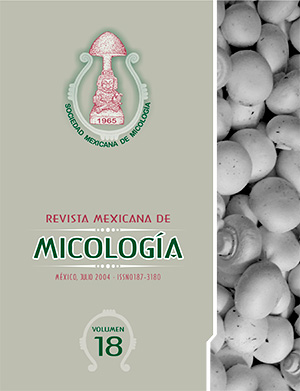Pleurotus ostreatus cultivation in the Highlands of Chiapas, Mexico
DOI:
https://doi.org/10.33885/sf.2004.3.912Keywords:
Rural production, Pleurotus ostreatus, Tzeltal women, alkaline immersionAbstract
Among the women of Tzeltal origin in The Highlands of Chiapas, Mexico, the rural
production of Pleurotus ostreatus is becoming an economic alternative in the lasts years. In
the Tenejapa county (among 1140 to 2440 asl), there are 53 cultivation units and the
responsible for 35 of them were interviewed. Among the most commonly used substrates are
corn cob, corn stalks and coffee husk, that are normally treated by alkaline immersion in a tap
water-lime 0.5% solution (pH= 10.9 ± 0.2) before spawning. The majority of production
units (81%) are made of wooden materials, metal sheet roofed and soil grounded. Only
14.3% have tap water service and 54.3 % have electricity. Size of premises varies between:
4x4 m, 5x4 m, 6x4 m y 8x4 m. Capacity of synthetic logs incubation varies between 32 and
200. Groups of 18-19 women take care of production in each unit. 66% of them receive
support from men in certain activities in the production process. Mean biological efficiency is
estimated to be 67.7% with an annual production of 10 ton of P. ostreatus in three production
cycles. The spent mushroom substrate is not used. The chemical characterization of straw
spent mushroom substrate is shown.
Downloads
Downloads
How to Cite
Issue
Section
License
Copyright notice
Open access policy
The authors who publish in this journal accept the following conditions:
In accordance with copyright laws, Scientia Fungorum recognizes and respects the authors’ moral rights, as well as the ownership of property rights, which will be transferred to the journal for dissemination in open access. Scientia Fungorum does not charge for submission and processing of articles for publication.
All the texts published by Scientia Fungorum –with no exception– are distributed under a Creative Commons License Attribution-NonCommercial-ShareAlike 4.0 International (CC BY-NC-SA 4.0), which allows third parties to use the publication as long as the work’s authorship and its first publication in this journal are mentioned.
The authors can enter into independent and additional contractual agreements for the nonexclusive distribution of the version of the article published in Scientia Fungorum (for example include it into an institutional repository or publish it in a book) as long as it is clearly and explicitly indicated that the work was published for the first time in Scientia Fungorum.
For all the above, the authors shall send the form of Letter-transfer of Property Rights for the first publication duly filled in and signed by the author(s). This form must be sent as a complementary file.
This work is licensed under a Creative Commons Attribution-NonCommercial-ShareAlike 4.0 International license (CC-By-NC-SA 4.0).



